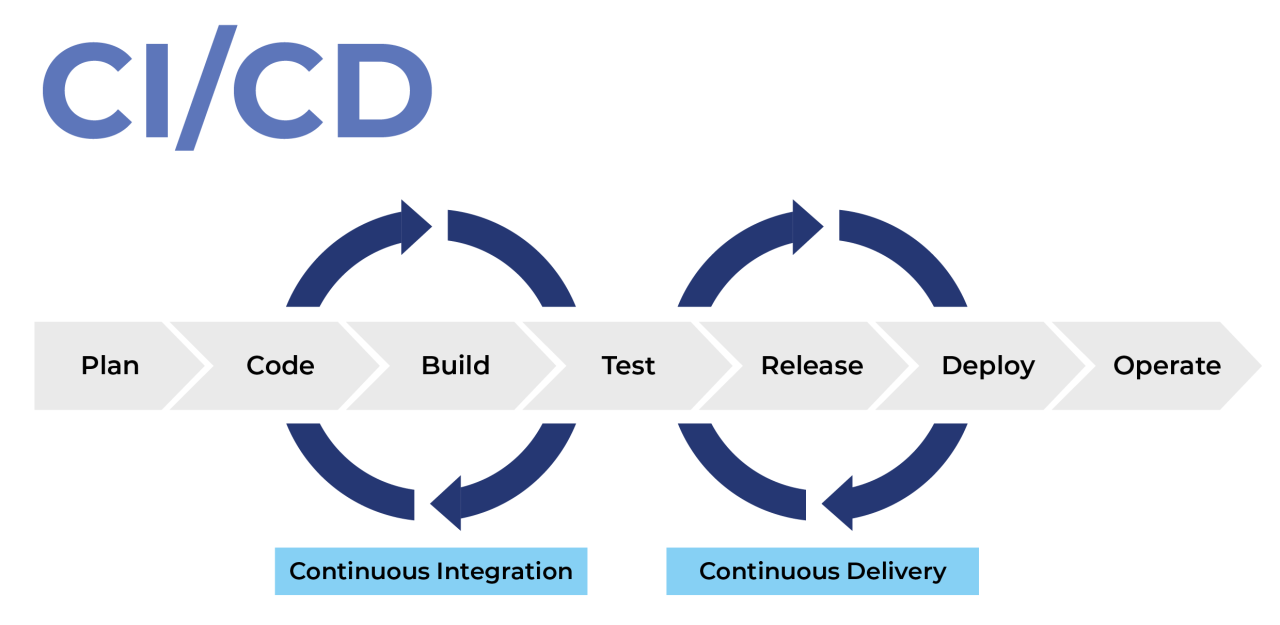The data build tool is an open-source command-line tool that allows data engineers and analysts to change data in their warehouse using SQL effectively, creating an exclusive transformation process with code. dbt assists in writing and executing data transformations by converting code into SQL. CI/CD (Continuous Integration and Continuous Deployment) is a modern DevOps practice that enables secure computerized code changes, ensuring correct, swift, and operative deployment. In the dbt setting, CI/CD processes verifying, testing, and deploying data modification designs, minimizing manual inaccuracies, and improving collaboration.
This write-up outlines the fundamentals of dbt CICD, its benefits, best practices, and implementation strategies.
Table of Contents
What is dbt?

dbt is the Data Build Tool. It is an SQL-based data modification and customization tool that aims to assist data engineers and analysts create, test, and deploy analytic workflows directly inside cloud data pipelines. dbt enables business analysts to create and implement data modifications using SQL independently. It focuses on transformation processes by providing essential capabilities to enhance analytics workflows.
What is CI/CD?

CI/CD stands for Continuous Integration and Continuous Delivery/Deployment. It is a software development technique that simplifies and automates the method of creating, testing, and deploying code and applications to ensure swift and efficient software delivery. CI/CD helps organizations prevent errors and code failures by maintaining a continuous software development cycle and updates. It also reduces complexity, improves efficiency, and simplifies workflows.
Benefits of CI/CD for dbt
Continuous Integration and Continuous Delivery/Deployment for Data Build Tool implementation offers numerous benefits like
- Enhanced Collaboration: CI/CD improves the working relationships between data analysts and organizations as changes can easily be handled and classified.
- Faster Development Cycles: By operating the build and test processes, CI/CD minimizes the time it takes to deploy code changes to production, resulting in improved business outcomes.
- Improved Data Quality: It detects errors early in the development process, and Automates dbt model execution, ensuring that changes are integrated easily with the existing codebase and meet standards.
- Increased Confidence in Changes: CI/CD gives certainty that project changes will work as expected in production by reducing the risk of errors.
- Efficient Resource Usage with Slim CI: dbt’s Slim CI features test only detailed designs and their dependencies, minimizing computational costs while ensuring thorough testing, saving time and resources.
- Reduced Mean Time Resolution (MTTR): CI/CD helps identify and resolve issues faster, minimizing the time it takes to retrieve the data.
- Reduced Risk of Bad Code Deployments: CI/CD minimizes the threat of deploying defective code by automatically testing and verifying changes before they reach production.
Setting Up CI/CD for dbt
Setting up CI/CD for dbt involves the following steps based on whether you are using dbt Cloud or dbt Core. Both ensure accurate and reliable testing and data quality control.
- Set up Environments: Create different development, staging, and production platforms to separate CI builds from data production.
- Create CI Jobs: Use the Continuous Integration Job option in the dbt cloud to activate jobs on pull requests and design the job to test only modified models.
- Connect Git Provider: Combine dbt Cloud with GitHub or Azure DevOps to trigger CI Jobs.
- Choose a CI/CD Tool: Use tools like Bitbucket Pipelines for automation.
- Define Pipeline Steps: This involves checking the repository, setting up Python, and installing dbt.
- Set Database Roles: Design roles with appropriate permissions for production and development platforms.
Key Components of dbt CICD
Irrespective of being able to modify code changes to high-quality software products automatically, CI/CD is not magic. The main components of a practical dbt CI/CD pipeline are built and test automation, source control, and deployment strategies and tools. These components play an essential role in the CI/CD process, and comprehending how they function can assist one in making the most of the CI/CD pipeline.
1. Build and Automated Test
Building and testing automation in CI/CD enables one to detect and correct errors in one’s code before they become complicated. It unifies code and dependencies, runs automated tests, and ensures one’s code is accurate and ready to go. By operating the build and test unit processes, bugs can be discovered early, better tests can be performed, and enhanced software quality.
2. Source Control
CI/CD depends on source control that helps keep track of code changes and triggers the pipelines when changes are discovered. It is like an alert shield keeper, managing all code changes and ensuring the code are accurately processed. Monitoring code versions and source control upgrade, a collaborative platform where developers can work hand in hand without stepping on each other’s toes. It permits the overturn of changes if challenges are encountered by ensuring the software development process stays simple even when issues arise.
3. Deployment Strategies
The deployment strategy completes the last phase of the CI/CD puzzle and decides how code changes are delivered to different platforms, be it staging or production. Most familiar strategies involve using a staging platform to test and a production platform for the last deployment. This ensures that the code changes are effectively and smoothly deployed by minimizing issues relating to deployment.
CI/CD Workflow for dbt
CI/CD workflow secures reliable and efficient deployment of data modifications by building and automating tests. The setups are below.
- Deployment Platform: Developers use the dbt Cloud IDE or dbt Core to work in a secluded schema. Quality services are designed for new models.
- Continuous Integration: CI jobs are generated by pull requests via webhooks, dbt Slim CI builds and tests only detailed designs and dependencies in a temporary schema.
- Review Process: Pull requests are surveyed by analytics engineers or design owners to ensure the accuracy of the domain and promising CI checks are needed before joining pull requests.
- Continuous Deployment: Joined codes are deployed to production via compiled jobs and staging platforms can be used for more difficult testing.
- Schema Cleanup: Schemas that are not permanent are dropped after pull requests are joined to prevent clutter.
Best Practices for dbt CI/CD
Some of the best practices for implementing CI/CD with dbt are
- Code Linting and Testing: Tools like SQLFluff for linting and running the quality of data tests in a platform are used to secure code functionality and readability.
- Distributed Ownership: Delegate design and model owners’ domain and review understanding.
- Style Guide: Determine a style guide for SQL and try to maintain data consistency across the model.
- Version Control: Handle designs with GIT, for new features and bug fixes.
By following these best practices, dbt CI/CD ensures a reliable and efficient pipeline
Challenges of CI/CD with dbt
The challenges of implementing CI/CD with dbt include the following
1. Cost and Resource Management
Challenges: Operating enormous dbt projects and continual builds of CI/CD pipelines can be costly.
Solution: Testing with temporary resources, maximising and observing CI/CD pipeline expenses and applying strategies to minimize build times like Slim CI.
2. Team Collaboration and Communication
Challenges: Having effective communication and cooperation among stakeholders and data engineers can be difficult.
Solution: Using communication tools to ease cooperation and solve problems quickly, documenting CI/CD pipelines, dbt projects and testing procedures. Also introducing clear standards for dbt projects, testing and CI/CD pipelines.
3. Data Quality and Testing
Challenges: Data quality and reliability in dbt pipelines require large testing strategies.
Solution: Applying data quality test to detect problems instantly in pipelines, use a linter to identify likely problems and implement code style.
4. Scalability and Performance
Challenges: As dbt projects expand with different designs and dependencies, extensive builds can be slow and resource-intensive.
Solution: Exploit parallel implementation of tests to speed up the CI/CD pipeline, concentrate on testing and building only models that are affected by changes, and ensure dbt dependencies are updated.
5. Incremental Builds and Data Refresh
Challenges: Accumulative builds can act differently on the first and second run, requiring different CI runs for better coverage.
Solution: Addressing problems manually and implementing automated refreshes to ensure dbt builds are a required step and run refreshes when necessary
6. CI/CD Pipeline Design and Integration
Challenges: Implementing dbt with other tools can be difficult in the CI/CD pipeline.
Solution: Build a flexible and modular CI/CD pipeline that conforms to various dbt projects and platforms, using orchestration tools to handle dbt deployments and jobs.
Conclusion
Data build tool as known is an open-source command line tool that enables analysts and data engineers to change data in their warehouse, enforcing CI/CD with dbt either by using dbt cloud or dbt Core simplifies data modification by enabling documentation, automated testing, and deployment that can lead to speedy, more efficient and reliable pipelines. Therefore, adopting CI/CD for dbt ensures cooperation, data and model quality, and simple deployment in recent data engineering workflows, and also setting up dbt with GitLab ensures computerized, compatible, and safe deployment of data models. To get the best of dbt while also having easy affordable pricing, try Hevo Transformer.
FAQ
1. What are the commonly used tools of the dbt CI/CD pipeline?
In dbt CI/CD, the commonly used tool is the dbt, which is the main tool for building and handling dbt models. Use of version control like GitHub, GitLab, Bitbucket, and so on, and CI/CD platforms such as GitHub Actions, Jenkins, CircleCI, and GitLabCI.
2. What are the steps in the dbt CI/CD pipeline?
The steps in the dbt CI/CD pipeline include:
Build: The dbt designs and models are built and verified.
Code Commit: Data engineers and analysts push code changes to a shared warehouse.
Test: Robotic tests are carried out to ensure that the dbt models are working properly.
Deploy: The dbt models are deployed to the intended or aimed platform.
3. Why is dbt CI/CD important?
dbt CI/CD is important because it minimizes errors, ensures models are deployed consistently, improves collaboration, fixes issues quickly, provides faster feedback on the status of dbt models, and permits developers to focus on writing code.





